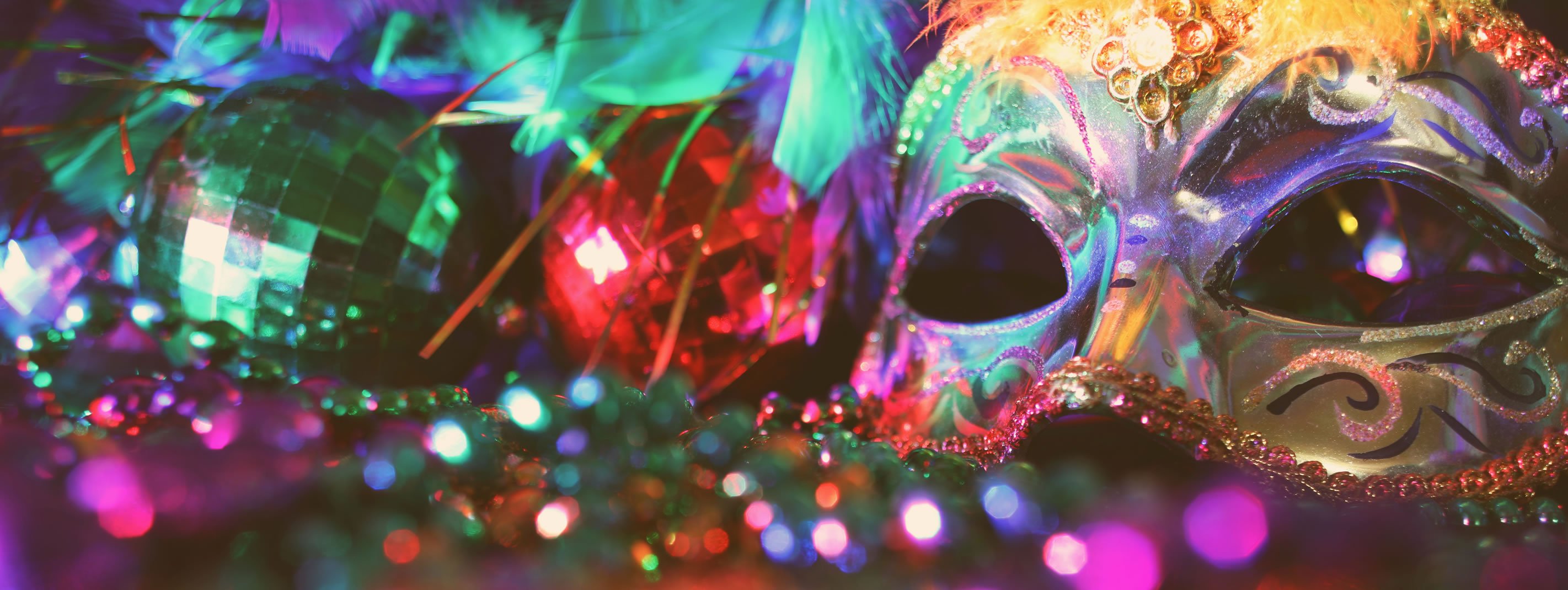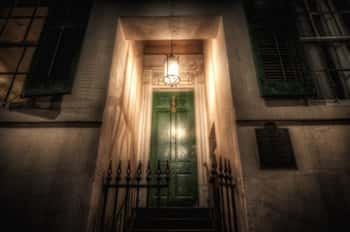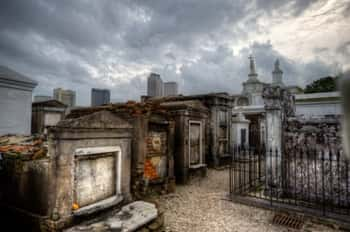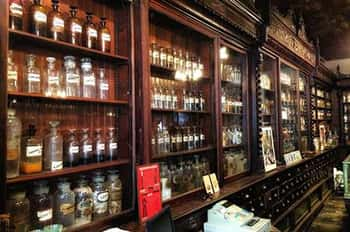
While Mardi Gras may be celebrated all over the world as a raucous holiday full of satire, mockery, and breaking from tradition, New Orleans is the only place synonymous with the Carnival season the world over. Extravagant balls are hosted by social clubs and organizations who put on the famous parades of New Orleans Mardi Gras. Krewes collect beads, doubloons, stuffed animals, and other “throws” to bestow upon parade-goers as their floats, marching bands, costumed dancers, flambeaux, and their very own royalty strut down St. Charles Ave.
Mardi Gras might stir up visions of laughter and joy, parades, costumes, beads, and delicious bavarian creme-filled king cakes, but there is a darker side to the festive masquerade. Elaborate masks cover the faces of reality beneath a deep and colorful veil. Delectable indulgences of every kind are realized before they have to be discreetly tucked away during Lent, a time of penance. Deep pagan roots and profound racial ties lie at the heart of this jubilant season, where death and chaos become themes not of Halloween, but of Mardi Gras itself...
Beginning on Epiphany (aka Three Kings Day or Twelfth Night) and ending on Fat Tuesday (aka Shrove Tuesday or Mardi Gras Day) is the season known as Carnival. Mardi Gras, French for “Fat Tuesday”, is the celebrated method of indulgence and debauchery before the fasting of Lent. A “farewell to the flesh”, it’s the only time of year in Louisiana that is acceptable to feast on King Cake, a traditionally circular shaped cinnamon pastry covered in frosting and colored sugar. A time when the colors of purple (for justice), green (for faith), and gold (for power) reign supreme and adorn every decoration on every door and balcony of the French Quarter.
Carnival parades were first held in New Orleans in 1837, even though the festive season was believed to be celebrated as far back as 1699. The first floats appeared twenty years later in 1857 with the Mistick Krewe of Comus, the oldest Mardi Gras Krewe in the city and is still active today.
Flambeaux: In the 18th and 19th centuries, electric lighting was not readily available, so torch-bearers, or “Flambeaux”, marched at the head of the parade to light the way. Slaves and free African-Americans were commonly used in these rolls. The tradition marches on to this day, although people of all races and backgrounds carry the flambeaux torch and provide parade entertainment by spinning and dancing with the flame.
Hail Rex!: First ascending to the Carnival throne in 1872, Rex, hereby named the “King of Carnival” is synonymous with New Orleans Mardi Gras like Harry Connick Jr. is synonymous with modern jazz. The first Rex was the Grand Duke Alexis of Russia, a prominent visitor to New Orleans and the post Civil-War south during the time of reconstruction. The King of Carnival is always a prominent person of New Orleans and given a symbolic key to the city by the New Orleans mayor. “Hail Rex” is sounded with cheer as the acclaimed King of Carnival parades the streets during the spectacle of the Rex parade on Mardi Gras day.
Mardi Gras Indians and Baby Dolls: Mardi Gras Indian tribes of African-American men have a long-standing tradition on the backstreets of New Orleans. They don their beautiful handmade, articularly beaded, colorfully feathered, and immaculate costumes to salute their heritage. The Native Americans took in runaway slaves and freedmen, treating them in as their fellow man, protecting them, and teaching their culture. The Mardi Gras Indian tribes are a way to pay respect to the people who influenced and provided for them.
African-American prostitutes of infamous Storyville had a nickname their clients called them… “baby dolls.” Dressed as adult-sized baby dolls with satin bloomers and bonnets, the women took to the street parades during Carnival time in the hopes of getting more work. Today, the baby dolls are still parading, only this time for the fun, honor of the past, and pure joy of it!
Masks: Dating as far back as pagan Rome, “masking” was a way to hide your identity and inhibitions. Elaborate and folk-art style masks worn today for New Orleans Mardi Gras are reminiscent of the masks of Carnivale in Venice, Italy.
Revelers who were generally excluded from the festivities in the Crescent City in the era of Jim Crow used the opportunity to conceal themselves and join in on the fun. In New Orleans today, it is actually required by law that float riders in Mardi Gras parades must be masked. Exceptions are made for notable figures, celebrities, and carnival royalty.
Throwing of Beads: Purple, representing justice, green, representing faith, and gold, representing power, are the traditional colors of the Mardi Gras season. The first and most notable daytime parade, Rex, and their crowned King chose the colors and it is still used to this day. The idea behind beads came from these carnival colors; glass beads were made and bestowed upon the person the King of Carnival (Rex) felt best represented their meaning. Glass beads are not exactly meant to be thrown though, so it wasn’t until the invention of the plastic Mardi Gras beads that they were actually tossed from the floats during the parades, the staple tradition of Mardi Gras that we see today.
Declared a legal holiday in Louisiana in 1875, Mardi Gras actually dates back thousands of years to pagan spring and fertility celebrations in ancient Rome. When Christianity first arrived in Rome, the traditions of pagan Lupercalia and Saturnalia weren’t eradicated, instead they were carried on and incorporated into their new Christian religion.
Lupercalia was a three day long fertility festival that took place in February. Cleansing the ancient city of evil spirits and unleashing health, fertility, and rebirth was the purpose of Lupercalia. The celebration was also known as “dies Februtas”, named after the purification instrument of “februa”, which gave February (Februarius) its name. The Feast of Lupercal is a famous scene in William Shakespeare’s Julius Caesar.
Saturnalia, an ancient festival honoring the sun God Saturn, was traditionally held in December. Celebrated with a sacrifice, a subsequent feast, gift-giving, and a general carnival-like ambiance, the custom was to elect a “King of the Saturnalia” (sound familiar) and he would reign over the ongoing festivities.
The general cleansing or a “farewell to the flesh” of Lupercalia, the election of a King of Saturnalia, the feasts, merry-making, and festivities of both pagan rituals, I think it’s pretty clear where the roots of our very own Mardi Gras lie.
A medieval French custom turned meridional tradition, Courir de Mardi Gras, or “Mardi Gras run”, takes place in the rustic parts of southern Louisiana at sunrise on Mardi Gras Day. The “run” was a means to collect ingredients to concoct a communal gumbo. Revelers gathered together and paraded to local farms and homes begging for ingredients along the way, ending in a feast only Fat Tuesday could achieve.
During early European begging rituals like that of Halloween, mumming, wassailing, and fête de la quémande ("feast of begging"); begging from house to house, manor to manor, and castle to castle was considered asmissable behavior and socially acceptable. Handmade costumes and masks allowed for concealing identity, parodying authority figures such as clergy and nobility, and role reversals. The upper class ruled the land and the poor were left to beg for food, so groups gathered together and danced and sang in exchange for the generous offerings bestowed upon them.
In Louisiana, these folk traditions were brought by the settlers of Celtic and French Europe into the Acadia region during the 17th and 18th centuries. Although the culture began to fade in the 1930s and 40s due to WWII, it revived again in the 50s and 60s and is prevalent today with more modern twists. Blindfolds, macabre masks, animal masks, antlers, and other strange paraphernalia are genuine wear for Courir de Mardi Gras and the customs even appeared on television episodes of Treme and True Detective.
Tradition: Dancing, drinking, begging, feasting, whipping, and penitence are all customary Courir de Mardi Gras traditions. In the early morning hours of Fat Tuesday, the riders gather at a central meeting place and Le Capitaine (the leader of the Mardi Gras) and his co-capitaines shout out the rules that must be adhered to by all of the revelers. The Capitaine can be identified by his cape and small flag, riding on horseback. Once the revelers, or “Mardi Gras” as they are called collectively, are organized then the drums and other instruments begin to play and they process to the first location. The Capitaine approaches first, requesting permission to enter the private property while the spirit of gaiety takes over the band of “Mardi Gras.” They attempt to sneak on the property while the Capitaines chase and scold them using their burlap whips. Hijinks, horseplay, and all manner of pranks are played on the farmers while begging for food and ingredients for the gumbo. Chicken, sausage, rice, and vegetables are all prize winning ingredients, but a LIVE chicken bolsters the most excitement and the drunken Mardi Gras run through the mud to catch them.
Miter hats, mortarboards, capuchons, handmade costumes of old work clothes, patchwork designs, masks made of wire mesh with painted and animal features are all fashionable for Courir even to this day. Revelers now use trucks and trailers as a means to move along their routes in addition to horseback, but the centuries old tradition of Courir de mardi Gras is still very much alive and well in rural Louisiana.
You can see for yourself the folkstyle celebration in the countryside in Basile, Choupic, Church Point, Duralde, Elton, Eunice, Gheens, Mamou, Soileau, South Cameron, and Tee Mamou-lota Louisiana.
Imagine seeing a group of maskers parading down your street at 5:30am on Mardi Gras morning, dressed as skeletons, the leader wearing an antler helmet, and all while loudly exclaiming “We come to remind you before you die. You better get your life together. Next time you see us, it’s too late to cry!” They knock on your doors and windows, you better run outside so you can see them before they disappear until next year!
The North Side Skull and Bone Gang is a tradition that’s been held for 200 years in the Treme. Rooted in African spirituality, meant to arise family spirits back from the cemetery to parade alongside their ancestors on Mardi Gras Day. You can witness this uniquely New Orleans Mardi Gras tradition by visiting the Backstreet Cultural Museum at 5am on Fat Tuesday morning when they leave on their mission of spreading peace. You might just hear the sound of drums beating and Chief Bruce “Sunpie” Barnes shouting “If you don’t live right, the Bone Man is commin’ for ya!”
The famed Arnaud’s Restaurant was opened in 1918 by Count Arnaud Cazenave, his beautiful daughter Germaine was just 16 at the time. Due to her father’s immense wealth and fame, along with her unwavering beauty, Germaine was repeatedly crowned Queen of Mardi Gras, elected more times than any other woman in New Orleans history. On one of her crowned years she had the perfect Mardi Gras gown handmade just for her, so perfect in fact, that she requested a duplicate gown that she could later be buried in. The elaborate horse-drawn carriage Easter parade to St. Louis Cathedral from Arnaud’s was another claim to fame that Germaine started in 1956, inspired by the Easter strollers of New York’s Fifth Ave that were popular at the time.
Adorned in her favorite royal gown, Germaine Cazenave Wells’ spirit is frequently seen moving about the Mardi Gras museum inside of Arnaud’s Restaurant where her memorabilia is lovingly displayed, including her past gowns resting on the shoulders of mannequins with her resemblance. Even without her specter strolling about, it sounds like the visions of the museum itself are enough to startle one at first. Her father’s spirit likes to hang around the bar, perhaps she is there to join him for a drink and celebrate their favorite holiday?
There are many places around New Orleans to experience the festive season and colorful culture of Mardi Gras and Carnival year-round without having to navigate the insane crowds and stand in long lines for non-existent bathrooms...here is your comprehensive list.
The Backstreet Cultural Museum is located in the Treme area of New Orleans. It houses Mardi Gras and jazz funeral memorabilia and other displays specific to New Orleans history. The museum was once the Blandin Funeral Home, only adding to the ambiance. The largest collection of Mardi Gras Indian Costumes are on display at Backstreet, as well as a vast collection of videos and stills of all the aforementioned traditions The North Side Skull and Bone Gang leaves from this location at 5am every Fat Tuesday. Admission is $10 per person.
Located in the backyard of Ronald W. Lewis’ home, this appointment only museum is chocked full of Mardi Gras Indian, Social Aid and Pleasure Club, and Skull and Bone Gang memorabilia based on Ronald’s own time participating in these amazing groups. There is no admission charge to visit House of Dance and Feathers, but as a charitable organization, donations are always welcomed and appreciated. Give Ronald a call and set up your own time to visit!
Parade floats, costumes, historic throws, albums, records, sheet music, photographs and more are on display in the Mardi Gras: It’s Carnival Time in Louisiana exhibit at the Louisiana State Museum. Adults $6, open Tuesday-Sunday 10am to 4:30pm.
The Carnival Krewes of Rex, Proteus, 12th Night Revelers, and Hermes each have a room named after them at Antoine’s Restaurant. Mardi Gras royalty memorabilia including gowns, crowns, scepters, and photographs grace the walls of the oldest restaurant in New Orleans. Private tours available upon request, it is always customary to tip! The best time to go is between lunch and dinner when there is less traffic in the annex.
In 1983, Arnaud’s Restaurant opened the Germaine Cazenave Wells Mardi Gras Museum. Named after the daughter of Count Arnaud himself, Germaine reigned as Mardi Gras Queen for 22 Carnival balls between 1937 and 1968, the most of any New Orleans woman in history. The priceless collection of jewels, gowns, photographs, and costumes is available for public viewing free to the public during restaurant hours.
Learn the history and evolution of Mardi Gras across the centuries at the Mardi Gras Museum of Costumes and Culture. Unique displays, history, and even the processes of costume making can be experienced. General admission is $12, open 7 days a week 11am to 3pm.
In 1932 the first mule-drawn float was built on the back of a garbage wagon, and that’s where the history of Kern Studios started. The public became interested in the inner-workings of Mardi Gras and its grand floats built by Kern Studios, so Mardi Gras World was opened in 1984 to great success and acclaim. General admission is $22, open 7 days a week 9am-5:30pm

Was this the site of a grizzly mass murder?

New Orleans' most haunted Cemetery

Who haunts this museum, and why?